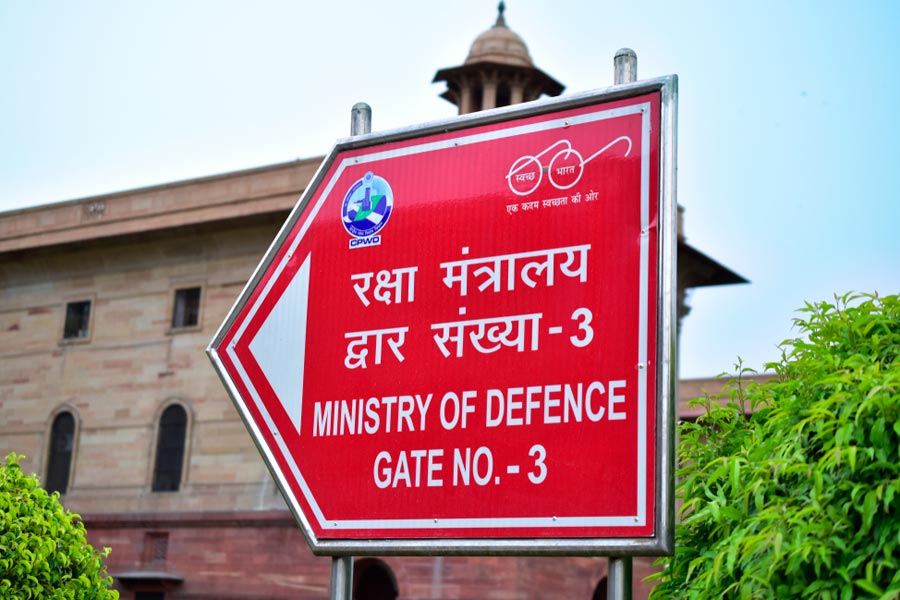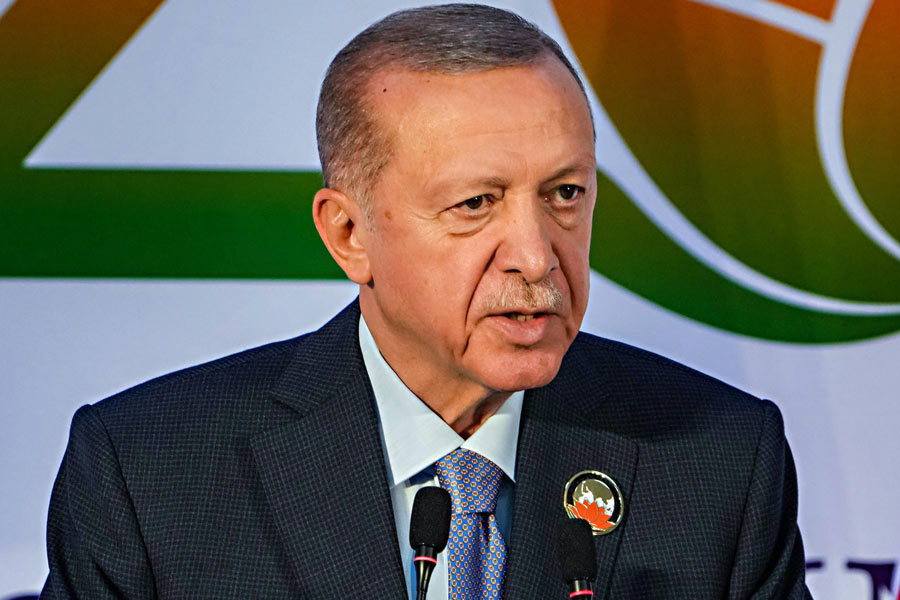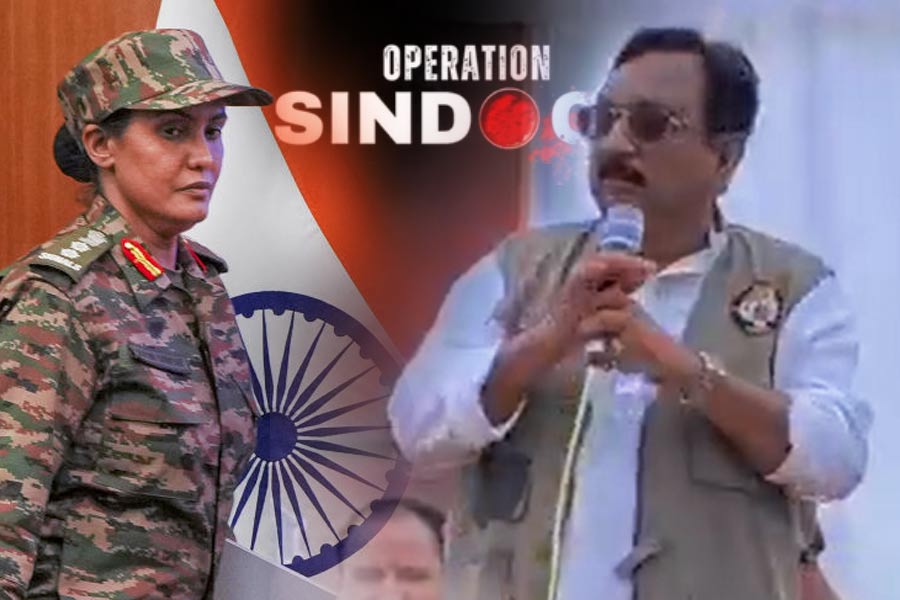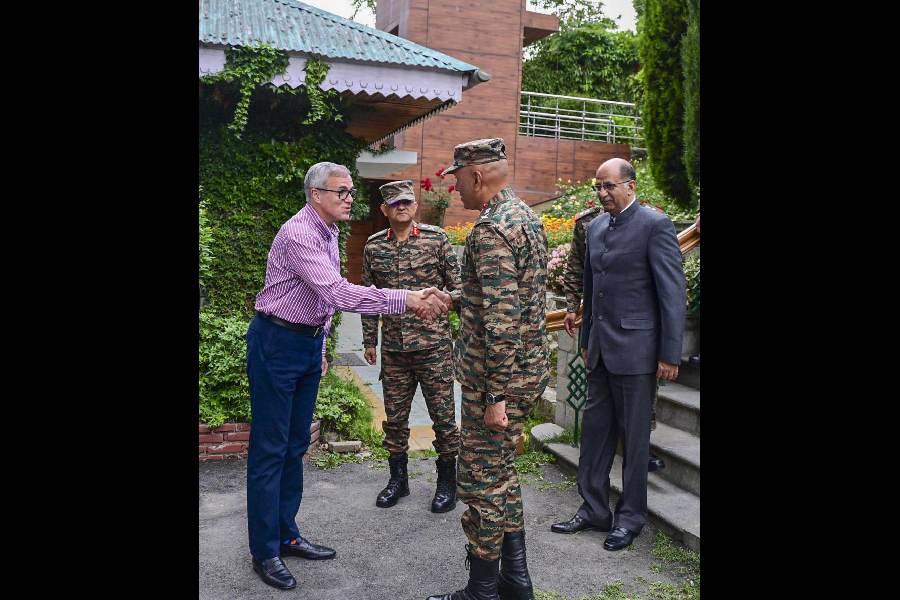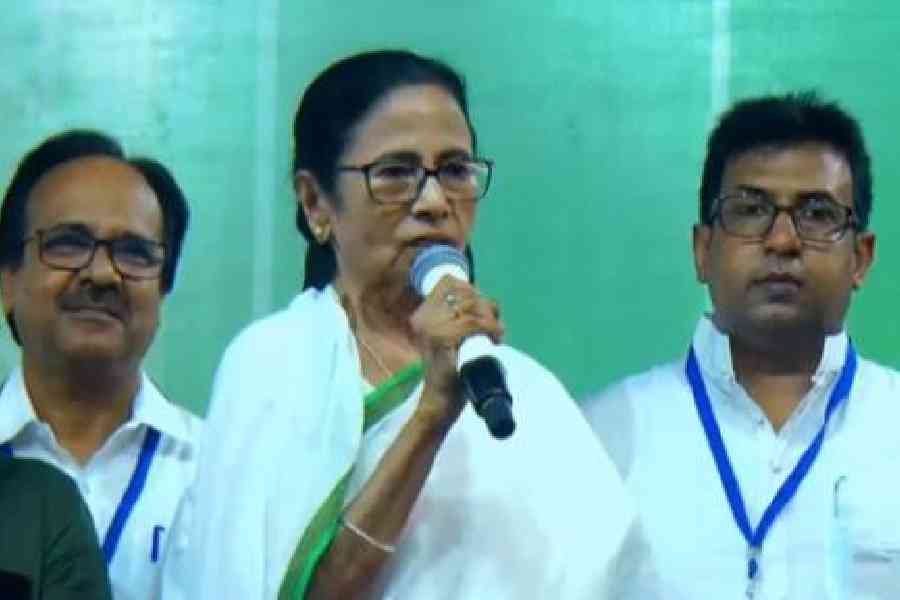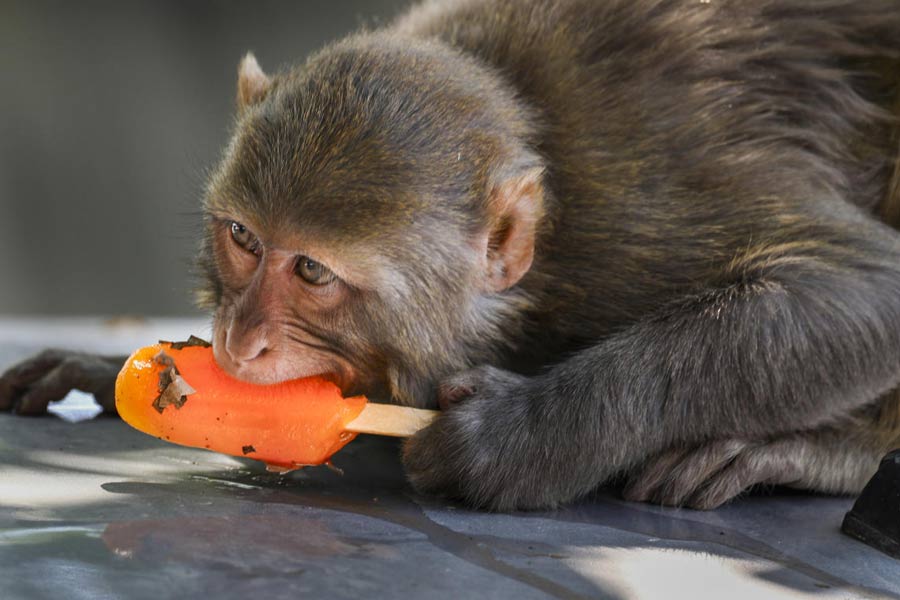 |
The board is up. “M.S. DHONI STAND,” it proclaims in blue and bold typeface hard to miss from a few hundred metres.
But getting Mahendra Singh Dhoni to inaugurate this new addition to the South Eastern Railway Sports Association Stadium in Kharagpur is proving a problem.
“Dhoni is the same…. It’s just that he doesn’t find time even for himself these days,” says cricketer Robin Kumar, “Kallu” to close friend Mahi.
Robin, proud to have played alongside the inventor of the helicopter shot, is part of the efforts to preserve memories of Dhoni’s long association with Kharagpur and the stadium where he played most of his early cricket.
When he wasn’t checking tickets on a platform at Kharagpur station in the railway uniform, Dhoni could be found in the stadium practising with his big gloves on or wielding the willow like a scimitar.
The name on the façade of the stadium’s new VIP gallery is a tribute to that quiet determination and tireless quest for success.
“We are waiting for the man himself to find some time to come here and inaugurate the stand we have named after him,” smiles Rajesh Singh, the sports secretary of the association.
South Eastern Railway is also set to convert a room in the stadium where Dhoni had spent many nights between 2001 and 2003 into a museum.
“Mahi is one of a kind. Ek bag chhodke uska koi samaan nahi tha (he never had any belongings other than a bag). And he could live out of it almost anywhere. For a while, three of us used to share a rented room. Then he started living in the stadium with our common friend and player Jai Shukla,” recalls Robin, who still turns out for South Eastern Railway.
The only furniture in the 12x14 room used to be two foldable beds, one of those Mahi’s. Now it houses a bit more, including a bat Dhoni had left behind in Kharagpur, a pair of Team India trousers he wore at the T20 World Cup in 2007, pairs of wicketkeeping gloves and trophies that South Eastern Railway won when he was in the team.
Dhoni’s father gifted some items recently when Robin and a few others turned up at his residence in Ranchi.
“Mahi wasn’t home. We spoke to his father about the stand and the museum and told him that we wanted Mahi to inaugurate both. He gave us a few things for the museum, which we gladly accepted,” says Robin.
Given his packed schedule, Dhoni’s old friends in Kharagpur know that he might not be able to inaugurate the VIP gallery anytime soon. They are happy to wait.
Baghada’s tiger
Just beyond the gallery opposite the new M.S. Dhoni Stand, coach Subrata Kumar Banerjee is waiting to share his memories about his most famous ward. Baghada, who runs the Kharagpur Blues coaching camp for kids, had coached Mahi when he used to play for South Eastern Railway.
“In the afternoon, when there was nobody to practise with, Mahi would just throw the ball at a wall and catch it on the rebound. Don’t forget, he was already a Ranji player then,” recalls the cricketer-turned-coach, eyes fixed on the young wards who have just begun their warm-up routine after arriving at the ground, some riding pillion on their moms’ Scooties.
According to Banerjee, the three things that worked for Dhoni were that he was “not addicted to any vice”, extremely disciplined and respectful towards elders.
So what’s his favourite Dhoni anecdote?
“Something very funny happened just after he had made his India debut. It was that ODI against Pakistan in which he made 148. Robin and I had gone to Meerut to buy some cricket equipment. We were walking back to our hotel when we saw some people standing outside a shop watching TV. Dhoni was batting,” recounts Banerjee.
Robin and his coach decided to watch a few overs standing there. Dhoni, yet to become the methodical cricketer who would temper his aggression for the team’s cause, was carting the bowlers all over the ground.
“Somehow, from our conversation, the fans standing there realised we knew him. They asked Robin if he had met Dhoni, to which he replied that they used to play together. The fans, of course, did not seem to believe him. Then Robin looked at me and said ‘…Aur yeh bhaisaab Dhoni ko coaching karate the (and this gentleman used to coach Dhoni)’. The entire group burst out laughing,” smiles Banerjee.
Each small-town kid currently training under Banerjee sees in himself a bit of Dhoni as a young man desperate to make a mark.
The Kharagpur Blues captain, 14-year-old Ankit Sharma, says: “It is a matter of great pride to play where Dhoni once did. It gives us a lot of hope. Sir (Banerjee) batatein hain ki unko (Dhoni) zid tha ki India ke liye khelenge (Sir tells us that Dhoni was determined to play for India), and he did it. He used to run 10km every day.”
Mahi’s work ethic is Ankit’s goal. He knows the rewards will follow.
Cut above the rest
A corner of the cramped ground-floor room belonging to the sports secretary of the association is where MSD used to sit and key in the names of players and fixtures on a computer.
“Be it standing on the platform examining tickets or doing office jobs for the sports association, Dhoni would seldom be idle. The rest of the time he would be either playing a cricket match or practising,” recalls Singh.
“Looking back, I feel he was a comet. We were in his path. Now he is light years away. Kharagpur cricket did not have the wherewithal to enrich his game. But he left us with many riveting cricketing memories,” he gushes.
Singh vividly recounts a moment that separated Dhoni from the rest.
“MSD would sometimes take a break from wicketkeeping because he could also bowl pretty well. The moment I am talking about came in a match when I was bowling and he was fielding at cover. The batsman skied a drive and you won’t believe the distance he ran back to take the catch. For me, that moment stands out because it showed the versatility of the man and his commitment to cricket.”
Friend Robin recalls how Dhoni was always up for a challenge at work or play.
“He would be with us whenever we had an adda over a few drinks but he never touched alcohol himself. One day, someone was pulling his leg over his aversion to alcohol and Mahi just grabbed a bottle of beer and said he could empty it at one go. He was so obstinate about things that many of us believed maybe he would. Just two gulps later, he ran outside to throw up,” he laughs.
Star power
When not playing cricket or working, Dhoni liked spending time at the fantastic indoor games facility of South Eastern Railway. He would play everything from snooker to badminton and was good at it.
In khep cricket, MSD used to mostly represent Durga Sporting, owned by Tunu Singh. The deal was that Tunu wouldn’t charge any rent for a one-room “1 type” quarter at Traffic Golkholi that was Dhoni and Robin’s home. For a bath, he would walk up to a well just outside the house and pour buckets of water on himself in the open.
It was only when Dhoni played for clubs other than Durga Sporting that he charged a fee, which was around Rs 2,000 a match, considerably more than what the other players commanded. But he never received the money himself. Friends in the team would collect it.
Just nine years on, Dhoni is above Usain Bolt, Novak Djokovic and teammate Sachin Tendulkar in the latest Forbes list of “the world’s 100 richest sportspersons”. His annual earnings have been estimated at $26.5 million or Rs 146.75 crore, including $23 million (Rs 127.38 crore) in endorsements.
“It’s a little difficult to believe his meteoric rise,” says Papa Rao, a friend of Dhoni’s from his old locality who runs a catering business.
Most of his friends in Kharagpur remember him as “a very bad loser”, a far cry from the image of Captain Cool that the rest of the world has bestowed on him.
“He also used to play the hardest against his dearest friends. He would bludgeon quality bowlers, especially in big matches. Even during our evening soccer games at the Traffic Golkholi field, he would be ever so competitive. I remember I dodged him with a good move one day. The next time he got the ball, he kicked it right at me with a lot of power just to let me know who’s the boss,” laughed old buddy Soma.
When Robin and the rest meet Dhoni now, which is once every few years, he is still the same with them.
“He can’t understand why I would want to take a picture with him. When I tried to click a friend of ours sitting with him on my cellphone the last time we met, he told me: ‘Photo khichne ke liye aaya kya re Kallu? Batein kar na (Have you come to click pictures, Kallu? Why don’t you just chat).’ I immediately put my cellphone away,” adds Robin, the South Eastern Railway captain.
Is Dhoni’s the most remarkable tale of triumph in Indian sport? Tell ttmetro@abpmail.com


